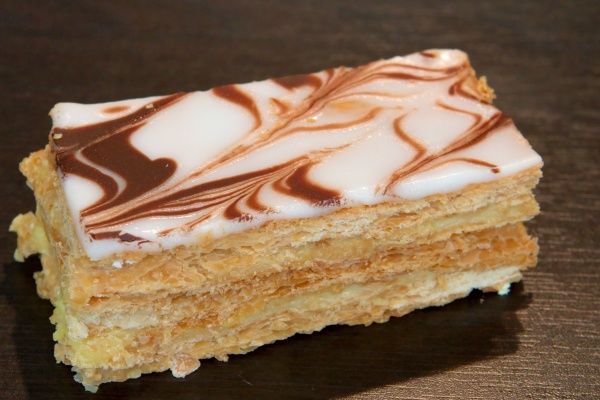Facts About Mille-feuille
The mille-feuille, also known as the vanilla slice or custard slice, is a delightful French pastry featuring layers of puff pastry and pastry cream. While its exact origins remain a mystery, this pastry has appeared in cookbooks since at least the 16th century. The version we know and love today was refined by the renowned French chef Marie-Antoine Carême.
Traditionally, a mille-feuille consists of three layers of crisp puff pastry and two layers of silky pastry cream. The top layer is typically dusted with confectioner's sugar or elegantly glazed with icing. This layered delicacy dates back to the 18th century and has seen various fillings over the years, including jam, marmalade, or Bavarian cream.
The mille-feuille has different names and variations around the world. In Russia, it's known as "Napoleon" while in Lithuania, it's called "Napoleonas." In Italy, you'll find it as "mille foglie" sometimes featuring added sponge cake layers. In the UK, it's often referred to as a "vanilla slice" or "custard slice."
Other variations include "Crèmeschnitte" in German-speaking countries, "Napoleonbakelse" in Sweden and Finland, and "tompouce" in Belgium and the Netherlands. In Greece, it goes by "μιλφέιγ" and in Spain, it's known as "milhojas." Latin American versions often feature layers of puff pastry filled with dulce de leche.
No matter what name you call it or how you fill it, the mille-feuille is a versatile and beloved pastry that has woven itself into many culinary traditions worldwide.

 North Korea
North Korea